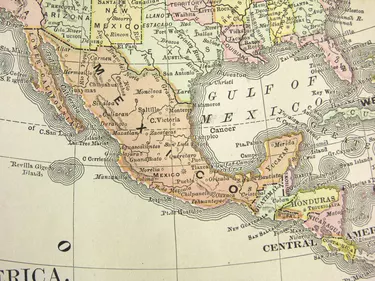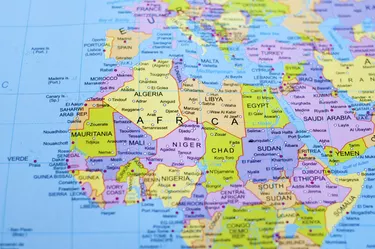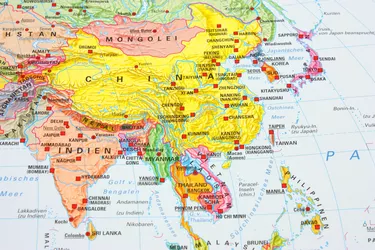
Countries have two ways to establish the value of their currency on the international market. Many choose to use a fixed rate backed up by reserves, usually gold, a selection of international currencies, called a basket, or the U.S. dollar, rather than letting currency values float with market conditions. While the International Monetary Fund classifies United Nations member country currencies, these classifications may be different than a country's stated intentions, so a conclusive list of countries pegging to the U.S. dollar may be hard to determine. However, small countries depending on international trade often want this connection known and well-managed.
The Americas
Video of the Day

With easy tourism access to the U.S., the Caribbean is a hotbed for pegged currencies, which keeps the power of tourist dollars stable. Aruba and the Netherlands Antilles, former Dutch colonies in the eastern Caribbean, peg to the U.S. dollar, as do the islands that use the Caribbean dollar. Those include Antigua, Dominica, St. Kitts, St. Lucia, St. Vincent and the Grenadines and Grenada. Barbados fixes its dollar with the U.S. currency, and the Bahamas, Belize, Bermuda and Cuba are other island nations around the Gulf of Mexico that peg to the dollar as well. Bolivia, Ecuador, Guyana, Panama and Venezuela are mainland countries in Central and South America using fixed-rate valuation.
Video of the Day
Africa

Countries in Africa frequently use currency pegging, although many are linked with the CFA Francs, two currencies used in Central Africa. Both are guaranteed by the government of France, so ultimately, the Euro influences international value. Several other African nations use the South African Rand, part of a Rand-based Common Monetary Area in the south of the continent. Dijibouti and Eritrea peg local currencies with the U.S. dollar.
The Middle East

Bahrain, Iraq, Jordan, Lebanon, Oman, Qatar, Saudi Arabia and the United Arab Emirates each use the U.S. dollar as a currency peg. Unlike Africa, the U.S. dollar is the only currency used through the region for fixing local currency rates.Particularly in the oil-rich countries, pegging to the U.S. dollar permits a degree of financial stability for countries dependent on resource export for income. Economies are less volatile than when floating on commodity market demand.
Asia

Hong Kong has pegged to the U.S. dollar since 1998, and Mongolia. Kazakhstan, Turkmenistan and Vietnam are others tying to the dollar. (China has had a history of both officially and unofficially pegging to the U.S. dollar as well as traditionally undervaluing its yuan to improve its export position globally.Officially, China may have the position that it uses a basket of currencies, but it does not disclose the relative weights of those currencies.